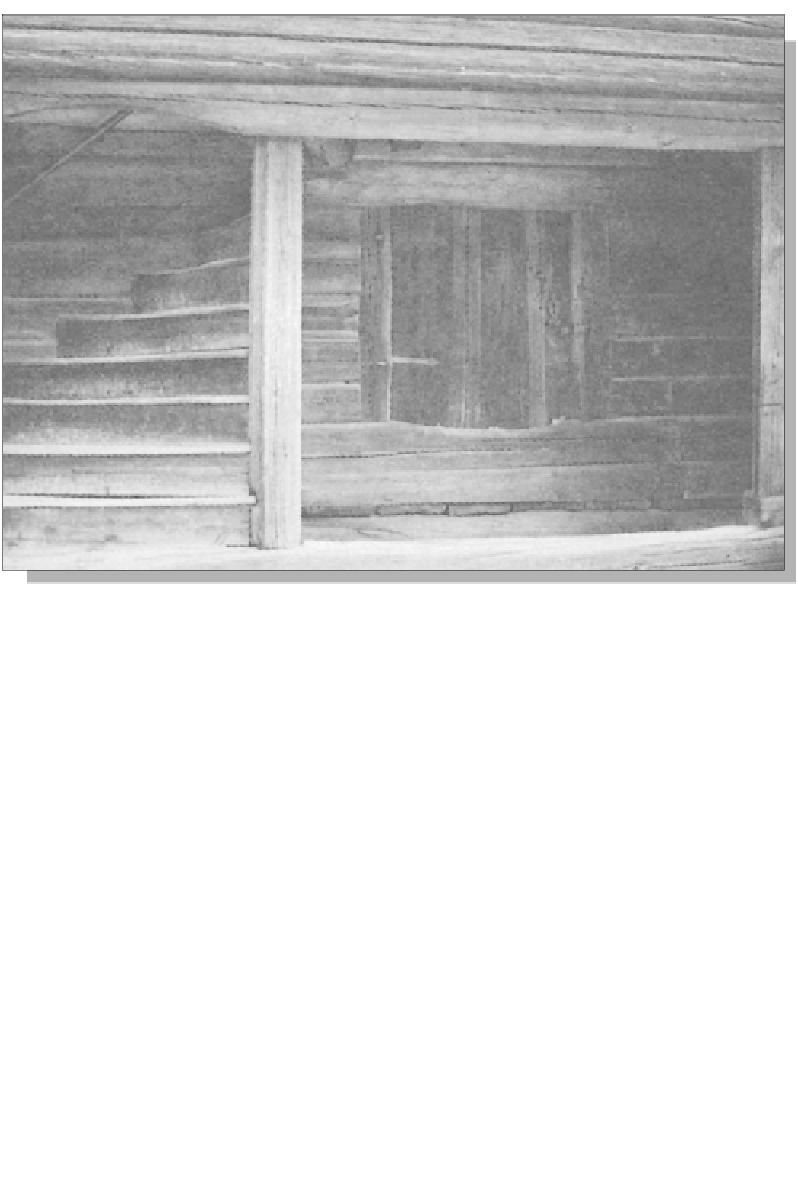Civil Engineering Reference
In-Depth Information
Figure 14.3: Solid, untreated timber has very good moisture-regulating properties.
the room. Untreated wooden panelling in a bathroom is an example. When the
bath is being used, the panelling absorbs a great deal of water vapour.
Afterwards, if the window is opened or the ventilation is increased, the air dries
out quickly. The panelling then releases the absorbed moisture back into the air
of the room. In comparison with the traditional vapour barrier, this method will
retain less acute damp in the room and strong ventilation will be less necessary.
It also has energy-saving potential. A similar situation is created when the occu-
pants of a house go to bed or leave for work - the moisture content in a living
room with absorptive walls will be stabilized. Even if the temperature often falls
during this period, the process still continues.
Untreated timber panelling, rammed earth and lightweight concrete are
examples of materials that absorb and release moisture rapidly.
Hygroscopic materials and the regulation of climate
Hygroscopic materials form a cushion for damp in the same way as a heavy material
is a cushion for temperature, and this exerts a positive influence on the internal cli-
mate. A moderate and stable moisture situation will reduce the chances of mites and

